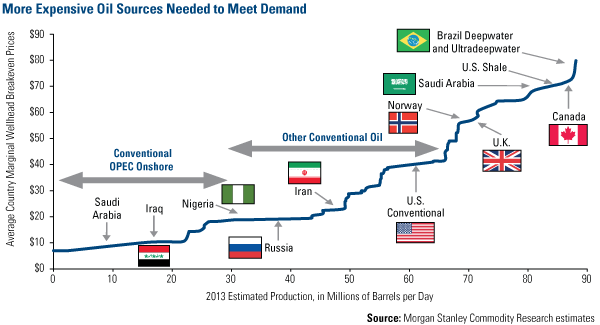Energy and Natural Resources Market Radar (May 11, 2013)
Strengths
- China consumed a total of 320.54 tons of gold in the first quarter, surging 25.6 percent year-over-year, according to a report released by the China Gold Association Tuesday. In the first quarter, China produced 89.91 tons of gold - an 11.26 percent increase over the same period last year, according to the association. "The big increase shows that Chinese consumers have strong demand for gold products," Zhang Bingnan, secretary-general of the China Gold Association, told the Global Times Tuesday.
- Recent data showed the strongest monthly US. coal exports since 1973, rising 58 percent in March (24 percent year-over-year) helped by higher shipments to Asia and Europe.
Weaknesses
- Commodity-based exchange traded products (ETPs) suffered record outflows of $9.3 billion in April, data showed on Thursday, as institutional investors dumped gold holdings. Leading wealth managers have been switching out of commodities since the start of the year in favor of equities and bonds as they look for yield, a trend which accelerated in April with a major sell-off across the commodities field, led by a collapse in the gold price.
- Chinese steel giant Baoshan Iron & Steel Co has cut product prices for the first time in nine months because of domestic oversupply. The company cut rates of hot-rolled products for June delivery by 180 yuan a ton and of cold-rolled products by 150 yuan. Baosteel had officially kept May prices flat after raising them for five consecutive months, but traders said the mill has been offering discounts for May bookings. Last time Shanghai-based Baoshan cut prices was on August 10, 2012, for September delivery.
- Copper imports by China declined to the lowest level in 22 months in April, raising concern that demand is waning from the biggest user. Inbound shipments of the refined metal, alloy and products were 295,799 metric tons last month, the General Administration of Customs said on its website today. That was the lowest since June 2011, down 7.4 percent from March and 21 percent lower than a year earlier, according to data compiled by Bloomberg. A drop in arrivals may help bring down local stockpiles as both official and private surveys showed China’s manufacturing expanded at a weaker pace in April.
Opportunities
- Mining assets apparently are depressed enough to attract private equity buyers. The Wall Street Journal reported that Carlyle has bid for a Rio Tinto copper mine in Australia. The initial bid is for a majority stake in the Northparkes mine in New South Wales, WSJ said, citing an unidentified person with knowledge of the matter. The bid price was not revealed according to the report. Rio holds an 80 percent stake in the copper and gold mine and the remaining 20 percent is held by Sumitomo Group.
- Is sub-Saharan Africa, in agriculture, the Brazil of the 1970s? Savills, the property consultancy, believes so – although acknowledging that acquiring land in the Dark Continent is "not for the faint-hearted." "The African model is likely to show a similar, although accelerated, pattern to agricultural investment opportunities in Brazil," the group said. "Forty years ago, Brazil had limited agriculture potential with poor infrastructure and a weak economy. However, investment in infrastructure, the availability of credit facilities and policy reform to consolidate land has turned around Brazil into a global hub of commercial agriculture". The company highlighted "significant growth corridors" developing in southern and eastern Africa "that not only unlock the potential for export for investors, but also significantly strengthen local and regional markets." These include swathes from Beira in Mozambique to Zambia and from Dar es Salaam in Tanzania to the Congo.
- Merger and acquisition opportunities continue in the oilfield equipment industry as Bloomberg reported that Dresser-Rand could be a takeover target for buyers such as Siemens AG, National Oilwell Varco and Cameron International Corp.
Threats
- Iron Ore supply growth to top demand, lowering prices, BHP says. Supply growth over the long term will outpace demand growth, Alan Chirgwin, GM of iron ore marketing, told a conference in Singapore. New supply will displace high-cost production, mainly from China, and result in lower prices and recent price volatility was a result of China’s inventory cycle after aggressive destocking in 2012. While the view on China is unchanged, rebalancing of the Chinese economy suggests resource intensity will consolidate at about half of GDP growth, Chirgwin said. China’s demand growth rate for many of company’s core products is expected to remain in the 2- to 4-percent per year range, he said at a gathering in Singapore.













